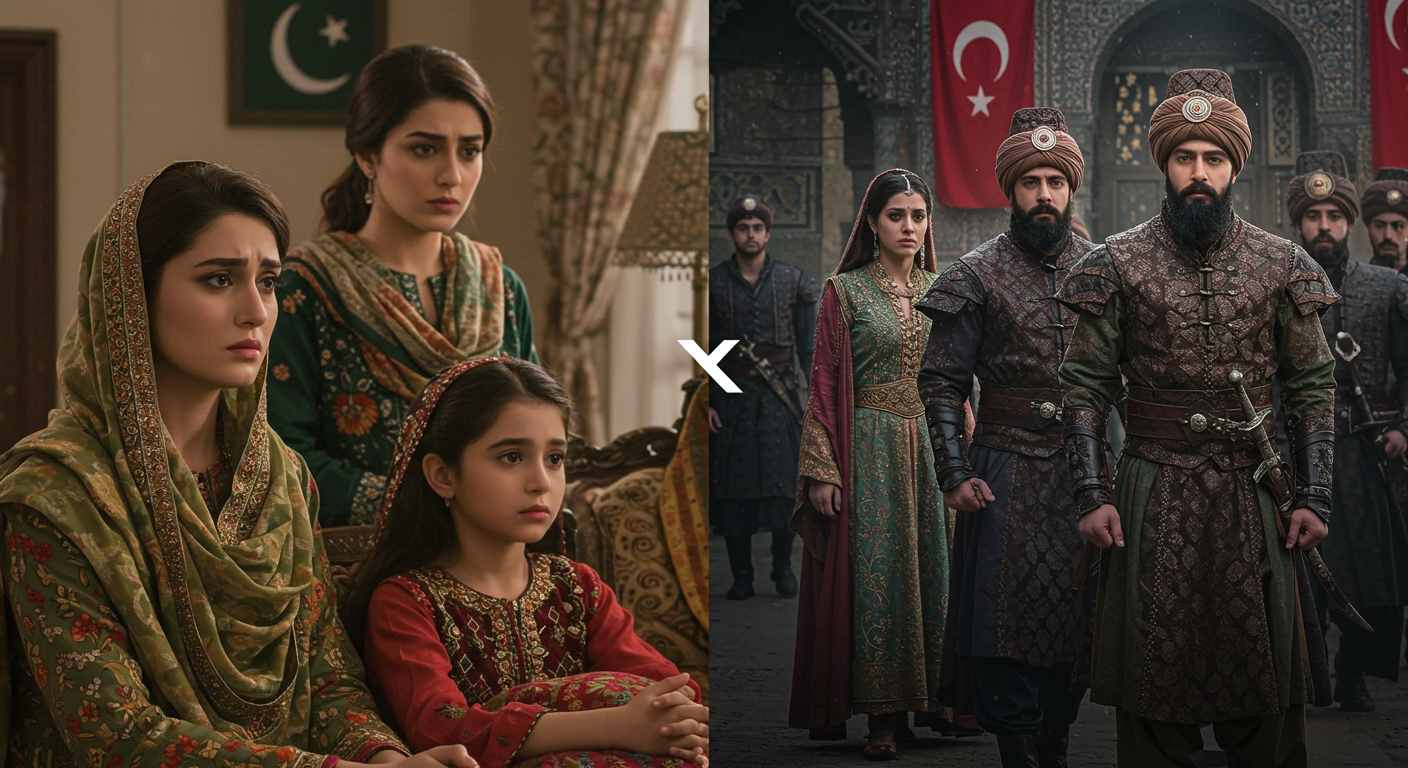Pakistani Drama Industry vs Turkish Series: Is Local Entertainment Losing Its Grip?
Over the past few decades, Pakistani dramas have earned global recognition for their rich storytelling, cultural depth, and emotionally resonant themes. From classics like Tanhaiyan and Dhoop Kinarey to modern hits like Humsafar and Mere Paas Tum Ho, the industry once held a powerful grip on the hearts of not only domestic but also international audiences. However, in recent years, a noticeable shift has taken place—viewers in Pakistan are increasingly drawn to foreign content, especially Turkish series. This rising popularity has sparked a growing concern: Is the Pakistani drama industry losing its edge to Turkish entertainment?
The Rise of Turkish Dramas in Pakistan
The trend of Turkish dramas in Pakistan started with Ishq-e-Mamnu (originally Aşk-ı Memnu) which aired on Pakistani television in 2012. It was a massive success, opening the floodgates for Turkish content in the country. Later, series like Diriliş: Ertuğrul, Kuruluş: Osman, and Fatmagül gained unprecedented viewership.
The appeal of Turkish series lies in their high production value, grand historical settings, gripping plots, and emotional intensity. With powerful performances, cinematic visuals, and cultural familiarity—owing to shared Islamic heritage—Turkish dramas have become a staple in many Pakistani households.
Why Pakistani Dramas Are Falling Behind
There are several reasons why Pakistani audiences are turning to Turkish alternatives:
- Repetitive Storylines: Pakistani dramas have become predictable, often revolving around marriage, family disputes, domestic violence, and extramarital affairs. The lack of diversity in themes has led to audience fatigue.
- Limited Production Quality: Budget constraints and short production timelines result in compromised visuals, set designs, and technical quality when compared to the polished look of Turkish shows.
- Over-commercialization: With an increasing focus on TRPs (Television Rating Points), many Pakistani dramas prioritize melodrama and shock value over meaningful storytelling.
- Lack of Genre Variety: Unlike Turkish dramas that explore fantasy, history, crime, and action, Pakistani series remain largely confined to social issues and romance.
- Short Shelf Life: Turkish series often run for multiple seasons with extended plots, while Pakistani dramas typically wrap up in under 30 episodes, offering less emotional investment over time.
Viewer Behavior Has Changed
The digital revolution has also contributed to this shift. OTT platforms like Netflix and YouTube have exposed Pakistani audiences to international content. With subtitles easily available, language barriers have been minimized. Many viewers now prefer binge-watching high-budget, globally trending Turkish shows over waiting for local episodes to air daily.
Industry Voices and Concerns
Many actors, writers, and producers within the Pakistani entertainment industry have voiced their concerns. Prominent director and actor Shaan Shahid has publicly criticized the airing of foreign content on national channels, arguing that it undermines the local industry.
Writers like Khalil-ur-Rehman Qamar have lamented the lack of originality in newer scripts and the growing influence of foreign storytelling styles. While some believe competition can improve quality, others fear it may erode cultural identity and local creativity.
Can Pakistani Dramas Reclaim Their Place?
All is not lost for the Pakistani drama industry. There are still a few shining examples like Sinf-e-Aahan, Parizaad, and Ehd-e-Wafa that broke the mold and earned critical acclaim for their fresh perspectives and production quality.
To regain lost ground, the industry must:
- Invest in new genres such as thrillers, science fiction, and historical fiction.
- Encourage young writers and directors to bring innovation and diverse viewpoints.
- Expand collaboration with international platforms to improve budgets and visibility.
- Promote quality over quantity by reducing focus on TRPs and increasing script development time.
Conclusion
Turkish dramas have indeed carved out a strong fanbase in Pakistan, but this should be seen as a wake-up call rather than a death sentence for the local industry. With the right reforms, creative freedom, and audience insight, Pakistani dramas can reinvent themselves and once again dominate the screens, not just at home but around the world.



